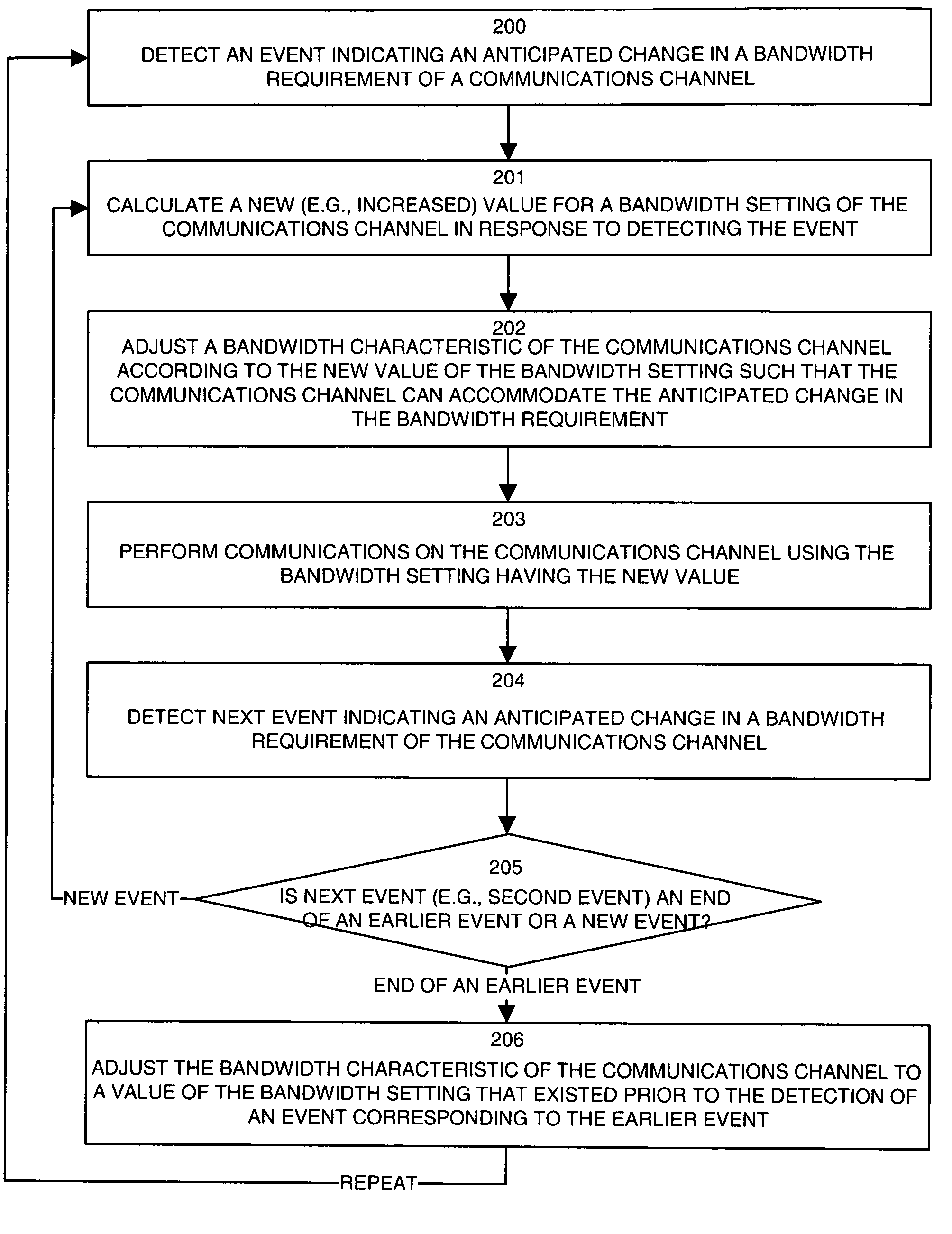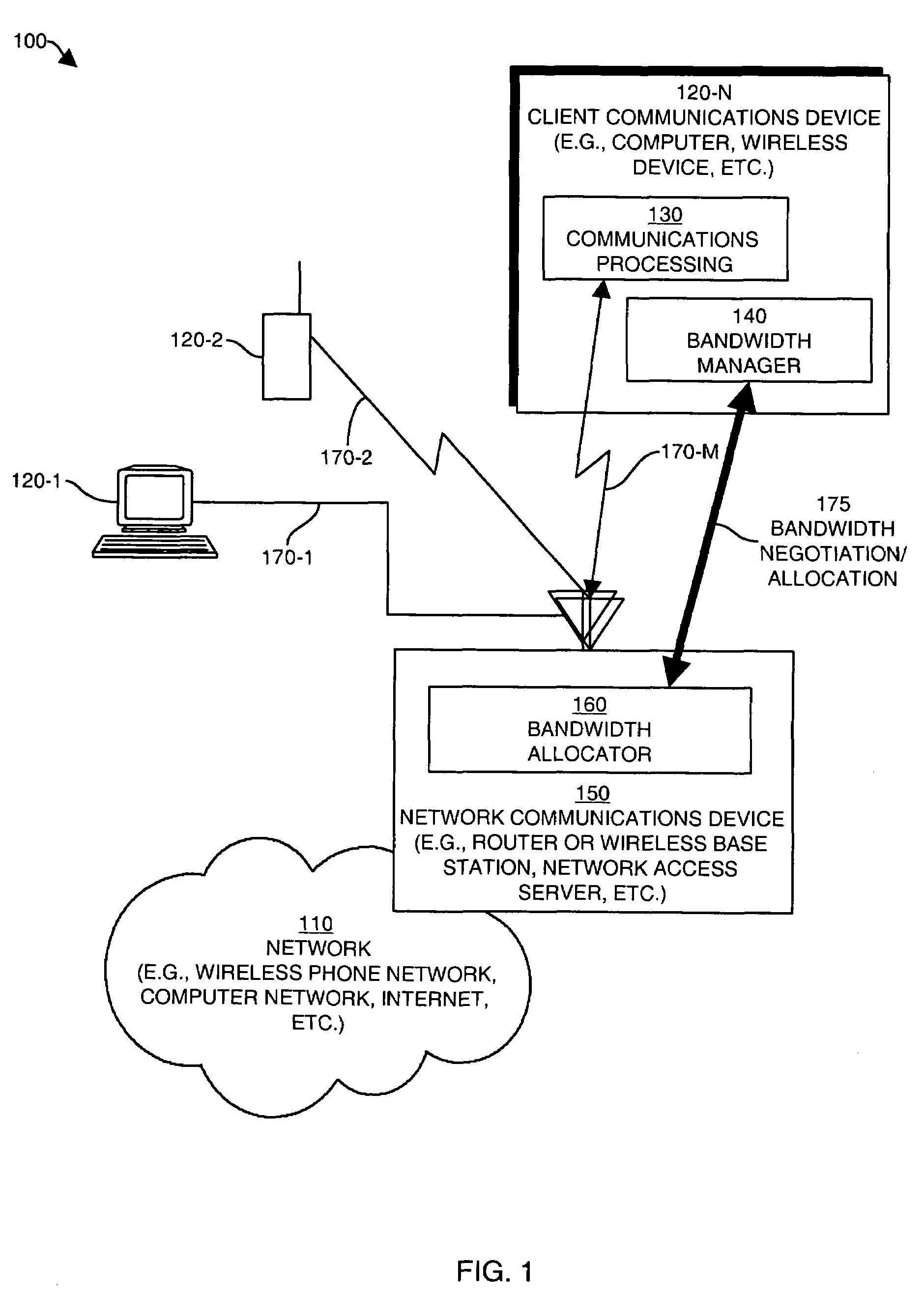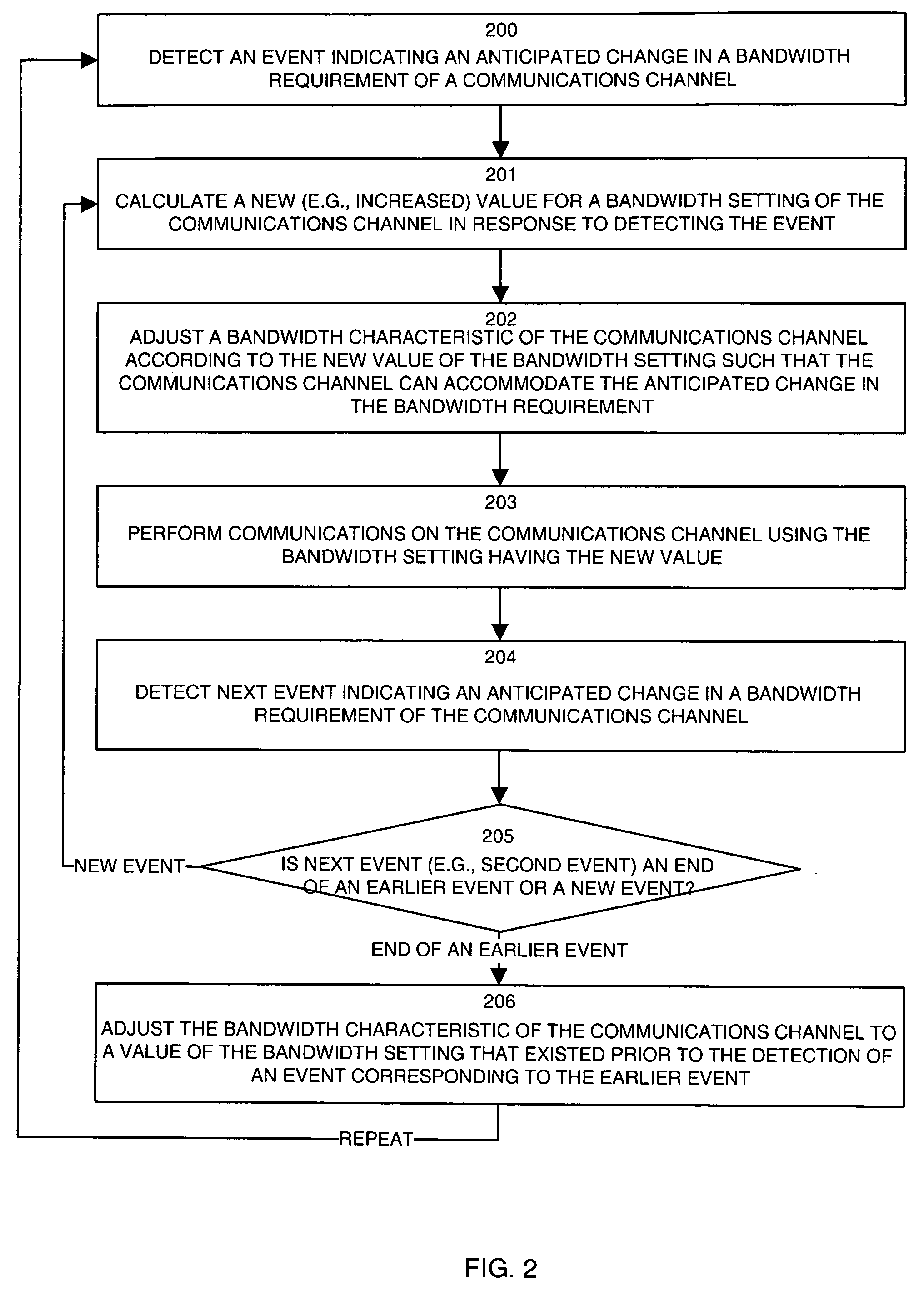[0012]In contrast to conventional systems and techniques for adjusting
bandwidth allocation in communications systems, embodiments of the present invention provide mechanisms and techniques to allow for the automatic and dynamic adjustment of bandwidth allocated to a data communications channel based on actual usage requirements of a communications device for which the bandwidth is needed. In particular, embodiments of the invention provide the ability for a device (or for a user controlling a device) to dynamically adjust bandwidth in a data communications channel in response to the detection of certain real-time events.
[0014]In this manner, embodiments of the invention are able to rapidly adjust an amount of bandwidth allocated to a communications channel based on real-time events which occur which relate to
device usage or transmission requirements that are anticipated for the communications channel. If, for example, a
web page includes multiple embedded URLs, a browser interpreting such a
web page will trigger certain events for each invocation of each embedded URL to raise the bandwidth of the communications channel, whereas other events indicative of a decreased
bandwidth requirement will cause a device equipped with an embodiment of the invention to lower the bandwidth of the communications channel. An embodiment of the invention which operates in conjunction with a browser can thus continually detect such events in order to successively increase or decrease the bandwidth allocated the communications channel in a real-time, automatic and dynamic manner.
[0015]Embodiments of the invention thus provide a
cumulative effect allowing bandwidth of a communications channel to be continually boosted or lowered upon the occurrence of multiple events which are require higher or lower anticipated bandwidths. The result of the operation of embodiments of the invention is that the bandwidth allocated to a communications channel on behalf of a device closely tracks usage requirements of the communications channel by the device (e.g., by the browser). In communications systems in which users of a device pay varying costs or charges for varying amounts of bandwidth consumed, embodiments of the invention can help ensure that bandwidth is allocated to a device at optimal levels and only as required. Thus costs for use of the device are effectively minimized to reflect actual usage requirements of the device.
[0022]In another embodiment, the first bandwidth event indicates a first increased anticipated change in the
bandwidth requirement of the communications channel and the second bandwidth event indicates a second increased anticipated change in the bandwidth requirements of the communications channel. In other words, in this embodiment, the first and second events represent back to back bandwidth increase events for which the bandwidth setting of the communications channel should be increased to accommodate additional bandwidth requirements which will be needed during
processing of activities related to these events. Also in this embodiment, the first new value of the bandwidth setting is greater than a former value of the bandwidth setting and the second new value of the bandwidth setting is greater than the first new value of the bandwidth setting, such that the bandwidth characteristic of the communications channel is dynamically adjusted to raise the bandwidth of the communications channel in response to the first and second bandwidth events. This embodiment thus provides a
cumulative effect of successively raising the bandwidth in response to the first and second events.
[0025]Embodiments of the invention may detect events related to the beginning of content
processing, for example, by using an
application programming interface (API) that provides access to the communications application (e.g., to the browser) in order to determine when the communications application operating within the communications device begins to process content (e.g., begins interpreting a new web page just loaded from a network). Such content
processing as related to a communications application such as a browser frequently includes or requires other
data transmission activities related to the communications channel and thus the beginning of content processing can trigger embodiments of the invention to boost the bandwidth setting of the communications channel in order to more efficiently
handle such additional transmissions.
[0029]In another embodiment, the first bandwidth event indicates a browser event for at least one of i) a beginning of a communications session and ii) a beginning of content processing. This embodiment of the invention is thus able to monitor and detect browser activities during browser operation. Also in this embodiment, the second bandwidth event indicates a browser event for at least one of i) an end of a communications session, ii) an end of content processing, and / or iii) a
timeout associated with a first bandwidth event. Such types of second events cause embodiments of the invention to lower the bandwidth setting of the communications channel.
 Login to View More
Login to View More  Login to View More
Login to View More 


